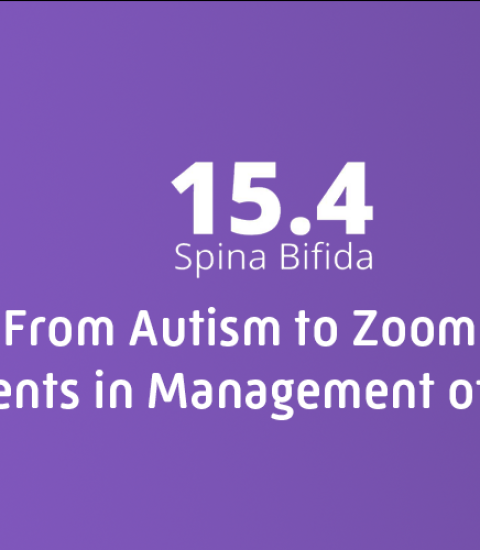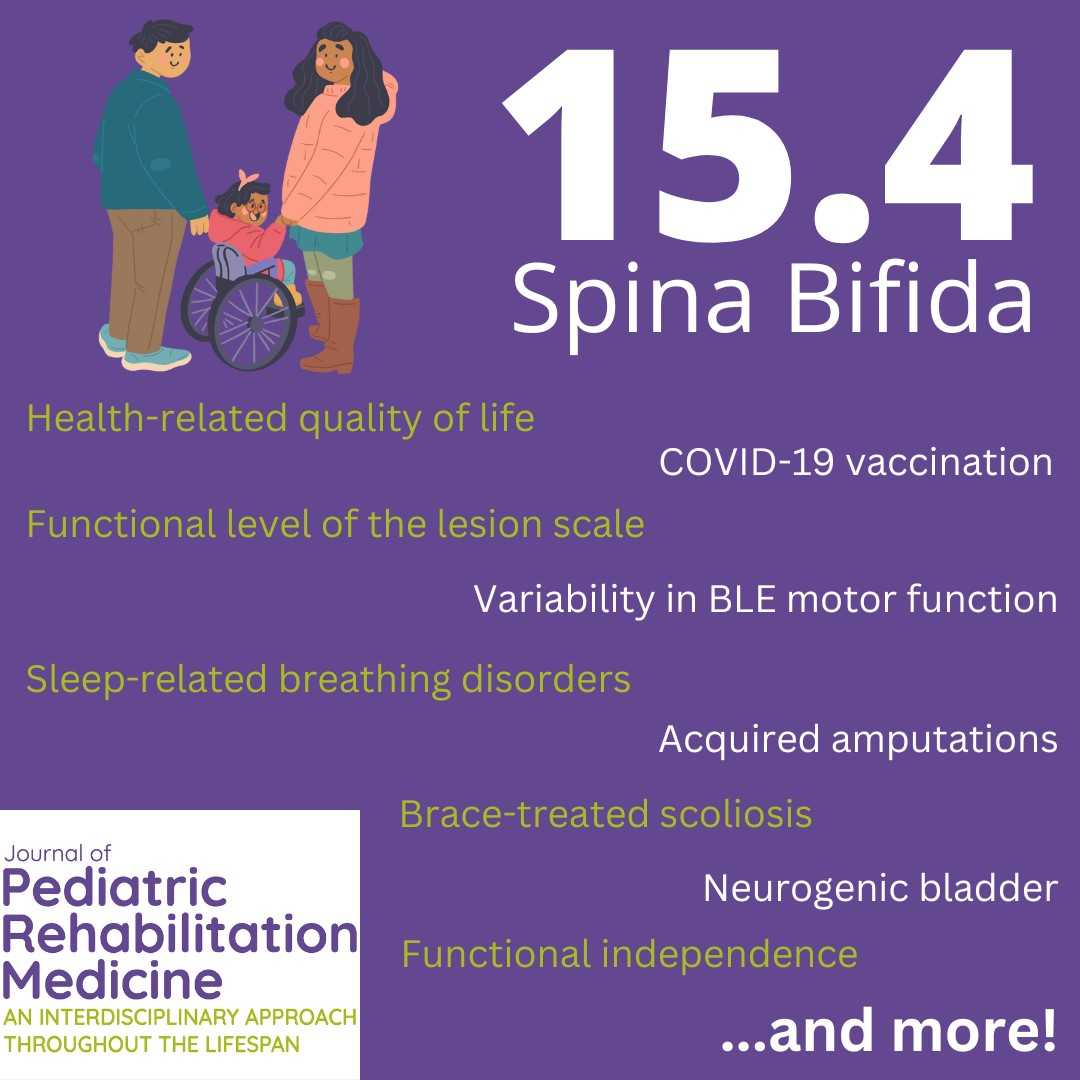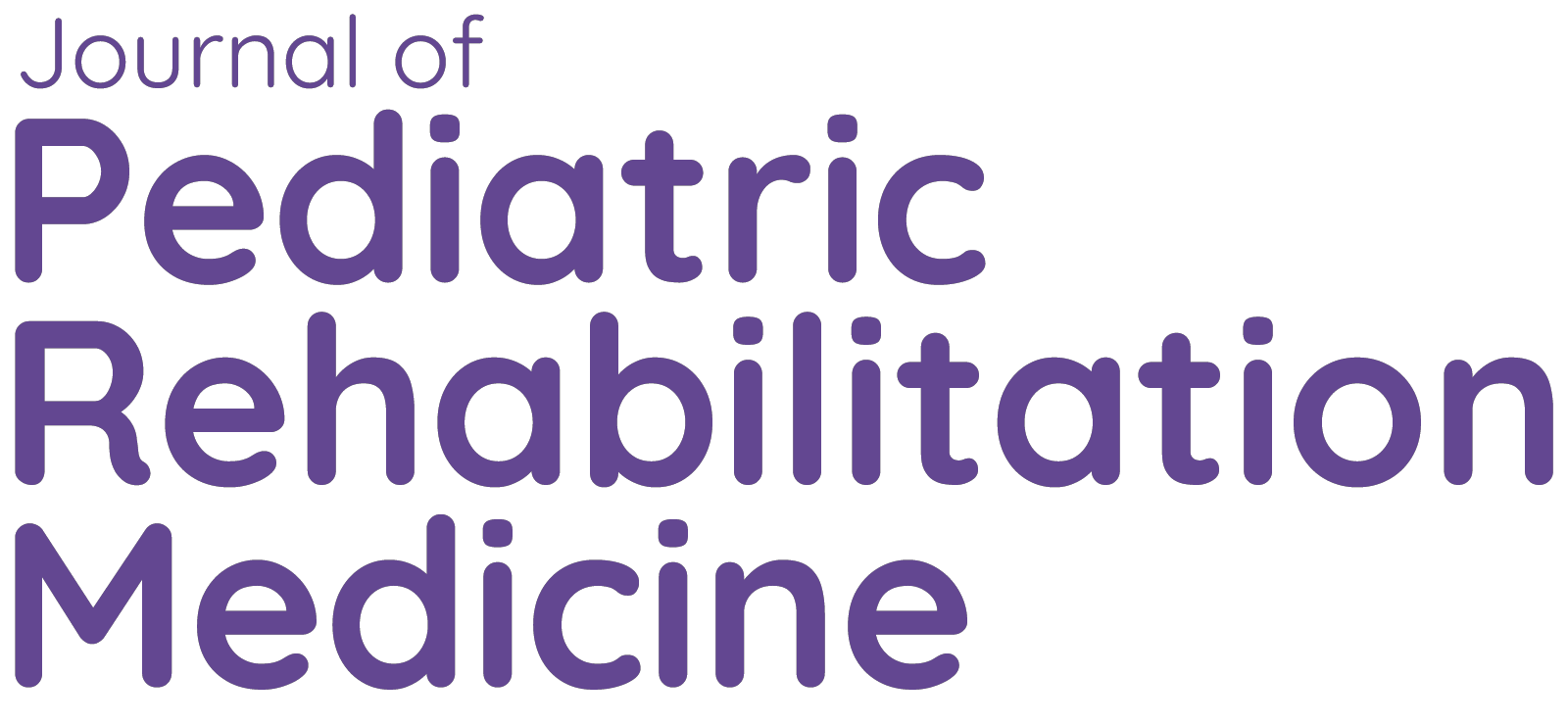
Amsterdam, NL, February 21, 2023 – Open spina bifida (SB), a neural tube defect (NTD), also known as myelomeningocele, remains the most complex congenital abnormality of the central nervous system compatible with long term survival. It gives rise to well known comorbidities and interventions, such as executive function challenges, urinary and bowel incontinence, and ventriculoperitoneal shunting. In this annual special issue published in the Journal of Pediatric Rehabilitation Medicine, noted experts review the most recent findings in the SB-related care of many comorbidities.
NTDs are an important cause of morbidity and mortality globally. Although many nations have introduced preventive legislation to fortify staple cereal grains with folic acid, there are still widely varying rates of NTDs among the world’s populations. Globally, nearly 300,000 babies are born with NTDs including SB each year. In North America, the prevalence is estimated at 39 infants per 100,000 live births.
The 15 research studies and reviews in this special issue, guest-edited by Jonathan Castillo, MD, MPH, Heidi Castillo, MD, Judy K. Thibadeau, RN, MN, and Timothy Brei, MD, highlight the most recent findings in the SB-related care of many comorbidities, from amputations and scoliosis to sleep related breathing disorders.
“Spina bifida gives rise to emerging comorbidities and interventions, for example, increasing autism spectrum disorder rates have been reported among individuals with SB utilizing a population-based birth cohort of 32,220 subjects,” explained co-Guest Editor Jonathan Castillo, MD, MPH, Department of Pediatrics, Meyer Center for Developmental Pediatrics, Texas Children’s Hospital and the Baylor College of Medicine, Houston, TX, USA, and colleagues in an introductory Editorial. “Alongside new clinical observations, telecommunication platforms such as Zoom® have evolved as SB-related clinical and research tools; new technologies such as telemedicine and customized electronic medical records continue to be adapted for service in SB care."

Caption: In this special issue of the Journal of Pediatric Rehabilitation Medicine noted experts review the most recent findings in the spina bifida (SB)-related care of many comorbidities, from amputations and scoliosis to sleep-related breathing disorders. Credit: Journal of Pediatric Rehabilitation Medicine.
The topics in this issue include:
- Variability in lower extremity motor function in SB only partially associated with spinal motor level
- Association of ethnicity and adaptive functioning with health-related quality of life in pediatric SB
- A retrospective study in Arkansas of sleep-related breathing disorders in the SB population (ages 1–20 years old)
- Functional level of lesion scale: Validating 14 years of research with the national SB patient registry
- Exploratory study of the provision of academic and health-related accommodations to transition-age adolescents and emerging adults with SB
- Follow-up of brace-treated scoliosis in children with cerebral palsy and SB
- Acquired amputations in patients with SB
- Parents’ report on the health care management of SB in early childhood
- Antibiotic use for asymptomatic bacteriuria in children with neurogenic bladder
- Assessment of preterm birth risk in women with skeletal dysplasia and short stature
- Family challenges in personal transportation of children with medical complexity
- Limitations of current developmental tests to measure functional independence of children
As revealed in one study, children with SB who have a shunt have more SB-related medical visits, more visits to a specialist, and a greater number of different types of specialists than those without a shunt. The findings on health care use suggest there are high levels of monitoring and care coordination that parents of children with a shunt need to navigate to care for their child. The results of another study demonstrated that persistent issues were identified by parents/adolescents regarding the provision of school-related accommodations. “This is a relevant area for clinical practice to ensure students with special health care needs and those with SB receive appropriate academic and health-related accommodations,” noted the Guest Editors.
The COVID-19 pandemic posed distinctive challenges for children and adolescents living with SB, as well as carers and health care workers. This issue includes several COVID-19 related articles including:
- A report of a national survey of COVID-19 vaccination in individuals with SB
- First-year impacts of the COVID-19 pandemic on pediatric physiatrists
- Pandemic decrease of in-person physiotherapy as a factor in parent-perceived decline in function in children with neuromuscular disorders
A survey of the impact of the COVID-19 pandemic on pediatric physiatrists revealed that while only a small percentage of pediatric physiatrists contracted COVID-19 during the first year of the pandemic, nearly all experienced workflow changes brought about by changed work patterns. Nearly all (96.5%) of pediatric physiatrists reported using telehealth during the pandemic compared to 14% prior to the pandemic. They reported numerous changes to their clinical operations, and 50% reported not having adequate personal protective equipment available for themselves or their staff all of the time. Fifteen pediatric physiatrists (5.9%) reported being furloughed, and three reported job loss during the first year of the pandemic.
“From autism to mortality, from middle America to work in Africa, SB care and research are undergoing tremendous changes,” noted Dr. Jonathan Castillo. “JPRM is a well-established platform for work accomplished through collaboration across the National Spina Bifida Patient Registry. Education and advocacy can be accomplished through dialog around emerging issues in SB care. One of the anticipated challenges of a fast-growing international research community is the danger of parallel and disjointed work. It is anticipated that the upcoming Spina Bifida Association's World Congress to be held March 22-25, 2023, in Tucson, Arizona, will aid in providing a place for connecting and developing ongoing relationships across centers. The Congress represents an international opportunity for dialog and collaboration and will include preconference activities fostering transnational partnership including the first global health symposium.”
Editor-in-Chief Elaine L. Pico, MD, FAAP, FAAPM&R, UCSF Benioff Children’s Hospital Oakland, CA, USA, welcomes the collaboration between the journal and the World Congress. “JPRM has aided professionals at home and abroad in keeping abreast of the latest investigational inquiries and their findings from institutions around the globe. We are delighted to publish the World Congress abstracts open access and fully participate in this worldwide dissemination of critical information on SB health care and related issues.”
###
NOTES FOR EDITORS
Special Issue:
From Autism to Zoom®: Spina bifida advocacy, care, education, and research in a changing world
Journal of Pediatric Rehabilitation Medicine, Volume 15, Issue 4, published by IOS Press
Guest Editors:
Jonathan Castillo, MD, MPH, Department of Pediatrics, Meyer Center for Developmental Pediatrics, Texas Children’s Hospital and the Baylor College of Medicine, Houston, TX, USA
Judy K. Thibadeau, RN, MN, Spina Bifida Association, Arlington, VA, USA
Tim Brei, MD, Division of Developmental Medicine, Department of Pediatrics, Seattle Children’s Hospital and the University of Washington School of Medicine, Seattle, WA, USA
Heidi Castillo, MD, Department of Pediatrics, Meyer Center for Developmental Pediatrics, Texas Children’s Hospital and the Baylor College of Medicine, Houston, TX, USA
Published by IOS Press
The issue is available at https://content.iospress.com/journals/journal-of-pediatric-rehabilitation-medicine/15/4.
Full text of the articles is available to journalists upon request. Contact Diana Murray, IOS Press, at +1 718-640-5678 or d.murray@iospress.com to request articles or additional information. Journalists who wish to interview the Guest Editors or authors should contact Jonathan Castillo, MD, MPH, at jcporter@texaschildrens.org.
ABOUT THE JOURNAL OF PEDIATRIC REHABILITATION MEDICINE
Editor-in-Chief: Elaine L. Pico, MD, FAAP, FAAPM&R, UCSF Benioff Children’s Hospital Oakland
The Journal of Pediatric Rehabilitation Medicine (JPRM): An Interdisciplinary Approach Throughout the Lifespan is designed to parallel the multidisciplinary teams caring for children, adolescents, and adults with childhood-onset physical disabilities and complex care needs worldwide. Published quarterly, topics include, and are not limited to, cerebral palsy, traumatic brain injury, spinal cord injury, spina bifida, limb deficiency, muscular dystrophy, stroke, cancer, developmental delays, and rare disorders. Furthermore, the journal welcomes papers dedicated to pediatric rehabilitation from a global health perspective. https://jpedrehabmed.com
ABOUT IOS PRESS
IOS Press is an independent international scientific, technical, medical (STM) publishing house established in 1987 in Amsterdam. We produce around 90 journals and 70 books annually in a broad range of subject categories, primarily specializing in health and life sciences (including neurosciences, medical informatics, cancer research, and rehabilitation) and computer sciences (including artificial intelligence, data science, and semantic web). In addition, we offer specialized services that support scientific advancement. www.iospress.com
